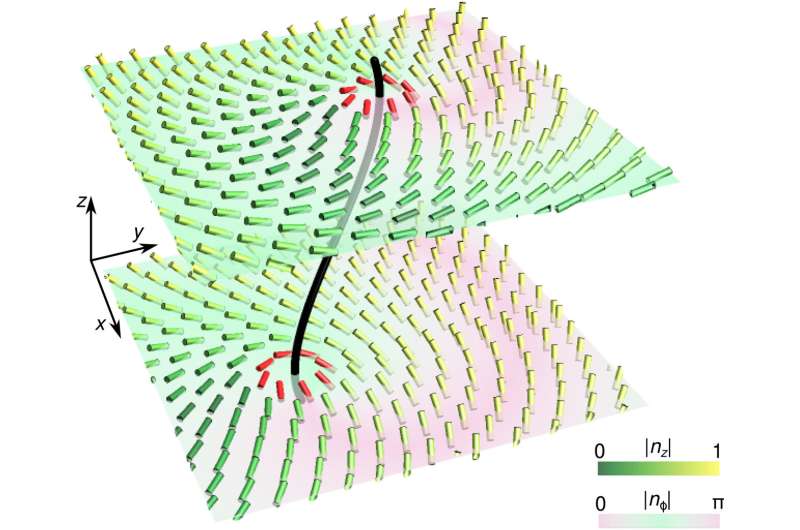August 22, 2022 report
Mathematicians suggest liquid crystals could be used to create building blocks for a new kind of computer

A pair of researchers at MIT have found evidence suggesting that a new kind of computer could be built based on liquid crystals rather than silicon. In their paper published in the journal Science Advances, Žiga Kos and Jörn Dunkel outline a possible design for a computer that takes advantage of slight differences in the orientation of the molecules that make up liquid crystals and the advantages such a system would have over those currently in use.
Most modern computer screens are made using liquid crystal displays (LCDs). Such displays are made by growing crystals in a flat plane. These crystals are made up of rod-shaped molecules that line up in a parallel fashion (those that line up the wrong way are removed). The orientation of the molecules in LCDs are not all perfect alignments, of course, but they are close enough to allow for sharp imagery.
In this new effort, Kos and Dunkel, suggest it should be possible to take advantage of those slight misalignments to create a new way to hold and manipulate computer data. They note that such a computer could encode a unique value to each type of misalignment to hold a bit of data. Thus, a computer using this approach would not be constrained to conventional binary bits—it could have a whole host of options, perhaps making it much faster than machines used today (depending on how quickly the orientations could be changed).
The orientations of the molecules could be manipulated, they note, using an electric field—and in so doing, perform calculations similar to the way they are done with standard logic gates. The researchers note that, in their approach, calculations would appear as ripples moving through the crystal.
To find out if their approach would work, the researchers first drew up theories to describe how such calculations would take place. They then created simulations based on their theories (showing a four-nbit configuration realizing universal classical NOR and NAND gates) and found that their ideas appeared to be sound. They suggest their approach is ready for testing should a team of engineers be interested.
More information: Žiga Kos et al, Nematic bits and universal logic gates, Science Advances (2022). DOI: 10.1126/sciadv.abp8371
© 2022 Science X Network



















